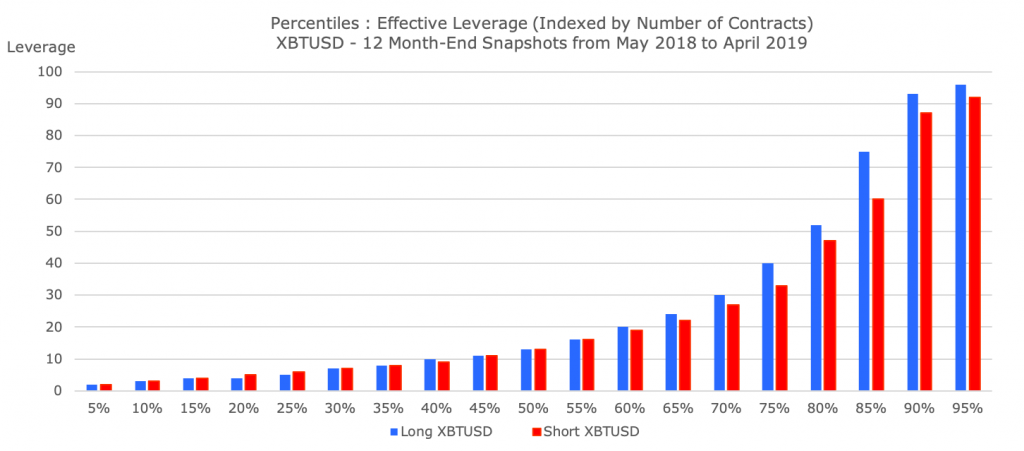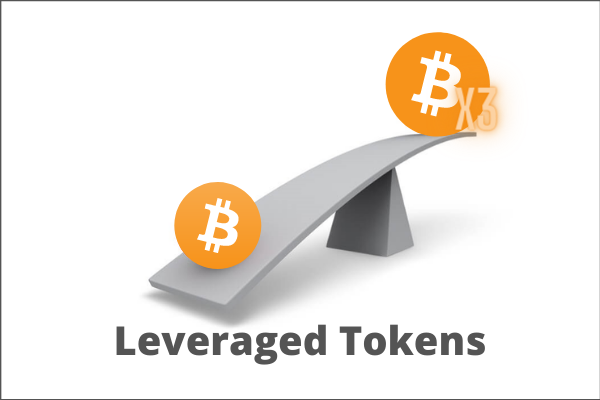Leveraged crypto trading: features and nuances
Have you ever wondered how to use leverage in cryptocurrency trading? The amount of leverage in cryptocurrency, depicted in ratios, is as follows: 5x corresponds to a ratio of 1:5 and 20x corresponds to 1:20. Thus, the ratio shows how a trader’s capital is multiplied.
In this article, we will look at how to use leverage in cryptocurrency and also some exchanges that offer it. To begin, let’s look at some real life trading examples.

What is crypto trading with leverage?
Let’s say a trader has $100 in his account. But he is sure that the price of Bitcoin will rise soon. The problem is that he only has $100. To maximize his profits, he can open a position with 10 times leverage, increasing his buying power to $1,000. The leverage ratio in this trade would be 1:10 ($100 x 10 = $1,000).
The good news for crypto traders is that they can use their positions in different ways. Margin trading and futures contracts come from traditional finance, but leveraged tokens are unique to the “crypto universe.”
Leveraged crypto trading and how it works
When using cryptocurrency leverage to trade, you must first deposit funds (i.e., collateral) into your margin account.
For example, a trader wants to bet $1,000 on Ethereum (ETH). But they only have $100. In this case, he will need to apply 10x leverage. The required margin at 1:10 would be 1/10 of $1,000, or $100. Thus, the trader can use his $100 as collateral.
Along with the initial margin requirement, the trader must maintain a margin threshold known as “maintenance margin”. Therefore, if the market price moves against the position and reduces the margin below the threshold, the trader must add more funds to his account to avoid liquidation. Liquidation, in turn, means that the exchange takes the trader’s margin.
So, what is leveraged trading? Simply put, it’s a way for traders to maximize their profits by using other people’s money.
How do I use leverage in cryptocurrency?
Crypto traders can use leverage to open long or short positions. If an investor expects the price of a cryptocurrency to rise, they will open a long position (buy). If another trader predicts that the price will fall, he will take a short (sell) position.
The above scenario demonstrates standard trading. However, using leverage, the trader can borrow on margin.
If a trader opens a $10,000 long position in BTC with 10x leverage, he only needs to deposit $1,000. If the price of Bitcoin jumps 20%, the trader will make a profit of $2,000. This is much more profitable than using only $1,000 in capital. In that case, he would only get a $200 profit without margin loans.
On the other hand, if Bitcoin price falls by 20%, the trader would lose $2000. So remember that 10x leverage works both ways. In this case, since the margin requirement was only $1,000, a 20% drop in BTC would result in liquidation of the position before the 20% swing was complete. Thus, a 10% drop in price would result in liquidation. (10% x $10,000 = $1,000).
However, different exchanges use different liquidation values. Moreover, they will send the trader a “margin call” to alert the trader that the account value has fallen below the maintenance margin.
A margin call gives the trader the opportunity to add more funds to his account in order to avoid liquidation. If you’re learning how to use leverage in cryptocurrency, don’t forget to learn about margin calls.
Short Position
Let’s flip the scenario to the short side, where the trader wants to open a $10,000 short position with 10x leverage. The required margin is the same as for a long position, $1,000.
So, the trader sells $10,000 worth of BTC, and the price falls 20%. The short seller can now buy back the same amount of BTC for just $8,000. In this case, the short seller makes a profit of $2,000. On the other hand, if the Bitcoin price rises by 20%, the “short” seller will need to add more funds to his account to avoid liquidation.
Note. None of these examples take into account margin trading commissions.
More importantly, before you can successfully go long or short in the cryptocurrency markets with or without leverage, you need to predict the future price direction.

Why use leverage?
If you’ve ever wondered, “What is cryptocurrency trading with leverage?”, you need to understand that traders use leverage to increase the size of their position and maximize profits.
In addition, when determining how to use leverage in cryptocurrency, traders should ask themselves, “Why use it?” In addition to maximizing profits, another reason to trade on margin is to increase liquidity.
For example, a trader can take $1,000 and invest it in a single trade with 1x leverage. Or take a position with 4x leverage with the same $1,000 in collateral.
Otherwise, the trader would have to put $4,000 of his own money into the trade. Trading on margin, one would only have to invest $1,000, leaving an additional $3,000 for other expenses. This way, a trader could, by going long, earn a smaller amount of money.
Managing risk when using leverage
Leveraged cryptocurrency trading requires less capital in the beginning, but it comes with liquidation risk. Thus, if a trader gets too high a leverage ratio, gradual price changes can lead to significant losses.
The more leverage a trader has, the more it is affected by volatility. Using lower leverage implies a margin of error in price fluctuations. Consequently, some crypto exchanges place limits on what kind of leverage beginners can use.
To manage risk, traders can use stop-loss and take-profit orders. These types of trades can help minimize risk. Stop-loss automatically closes a position at a certain price, and this feature is very helpful for traders when the market is playing against them.
Take-profit does the opposite. These orders close the position when the profit reaches a certain level. Take-profit orders fix profits at a certain price before the market can change direction.
So, you’ve already figured out that there are two sides to trading with leverage. There is the potential for multiple profits as well as excessive losses. Furthermore, note that leverage increases exponentially.
Margin Call
It is difficult to correctly predict the future price behavior of a cryptocurrency. Therefore, when the price of an asset moves contrary to a prediction, the trader must act quickly to avoid being liquidated due to a lack of collateral in his or her margin account.
When the price of a cryptocurrency moves against the trader, the exchange will seek to cover itself. If a trader fails to respond to a margin call by depositing more and more funds, the trader may be liquidated for the total amount of the margin loan.
To avoid liquidation, traders should risk only a manageable amount of cryptocurrency (no more than they can afford to lose) and keep the stop-loss at the same level.

Pros and cons of margin trading cryptocurrencies
Pros:
Volatile cryptocurrency markets mean greater profits when a leveraged trader makes correct predictions. In addition, a tolerance for high risk, good analytical skills, and competent stop-loss order placement can make leveraged trading more profitable.
Cons:
However, high price volatility means big losses for leveraged traders who misunderstand the market. Novice traders can easily be eliminated, while experienced traders must be willing to take the time to control their trades.
Leveraged Cryptocurrency Exchanges
When discussing “what is leveraged cryptocurrency trading?”, you need to look at which crypto-margin platforms offer the most leverage. Below are some of them:
Bybit
Leverage: 1:100
Coins: ETH, BTC, XRP and various altcoins.
PrimeBit (has the highest leverage)
Leverage: 1:200
Coins: ETH, BTC, LTC.
Binance
Leverage: 1:125
Coins: ADA, BNB, BTC, ETH, DOT, XRP and many more.
BitMEX
Leverage: 1:100
Coins: BTC, ETH, LTC.
PrimeXBT
Leverage: 1:100
Coins: BTC, ETH, XRP and others.
Decentralized autonomous organizations are becoming a popular way to implement community management for crypto projects.
Using leveraged tokens
Traditional leveraged margin trading in cryptocurrency is not the only way. Crypto offers another way, and that is “leveraged tokens.
For example, a 3x “long Ethereum token” (ETHBULL) will yield a return on an Ethereum investment. Thus, if the price of ETH increases by 10%, the value of ETHBULL will increase by 30%. The same calculations, but in the opposite direction, will be when the price of ETH falls.
Leveraged tokens can also be risky, so it is better to research them as best as possible to avoid making short-sighted decisions later. Binance, KuCoin, and FTX are some of the crypto exchanges that offer them.

Characteristics of leveraged tokens
- Rebalancing Investments
In the example above, ETHBULL offers three times the underlying asset. The token automatically rebalances to maintain the 3x target. If it makes money, it reinvests profits. If it is losing, ETHBULL will sell a portion of its position. Leveraged tokens are usually rebalanced every day.
Binance leveraged tokens work a little differently. Instead of using a specific target, they typically use a range of 1.25x to 4x the price of the underlying asset.
- Simplicity
Traditional margin trading can be complicated and requires careful monitoring. Leveraged tokens, on the other hand, are easy to use.
- Zero collateral
Leveraged tokens require no collateral or margin requirements, and liquidation risks are low due to rebalancing. Even if the value of a token falls, it will simply sell portions of its position.
- Reduced volatility
This refers to the negative impact of volatility on investments. The best way to explain how this works is to give an example.
If a trader buys ETH for $1,000 at once and the price jumps 10%, so ETH is now worth $1,100. But suddenly, the price drops sharply by 10%. 1100$ x 10% = 110. So now the trader’s ETH assets are worth $990 ($1,100 – $110).
Let’s take the same scenario with a BULLETH token with 3x leverage. A 10% increase turns a $1,000 investment into a 30% profit, or $1,300. The next day, the price drops by 10%. A leveraged token turns that into a 30% loss. 1300 х 0,30 = 390$. The resulting value is $910 ($1,300-390).
The point is that volatility fades faster in investing than in standard trades.
- Not always available
Many crypto exchanges don’t offer leveraged tokens, so they can be difficult to find, especially for U.S. residents.
- Additional Fees
There are additional fees associated with leveraged tokens. Binance, for example, charges a daily management fee of 0.01%.
- Short Term
Due to lower volatility and management fees, long-term buy-and-hold strategies are not available for leveraged tokens.
